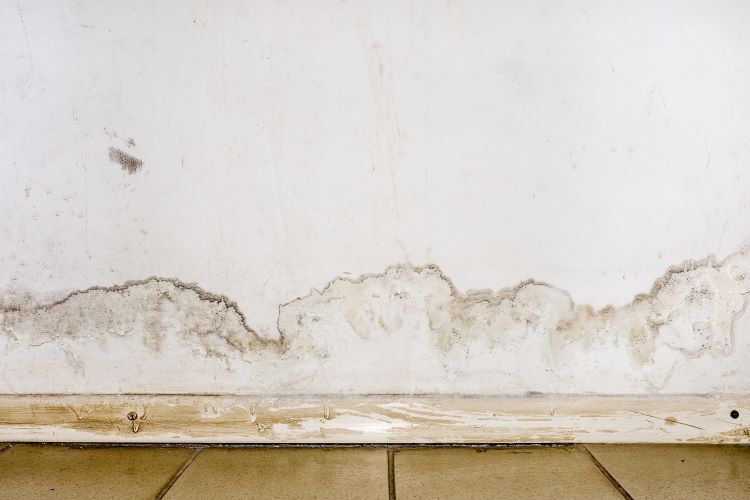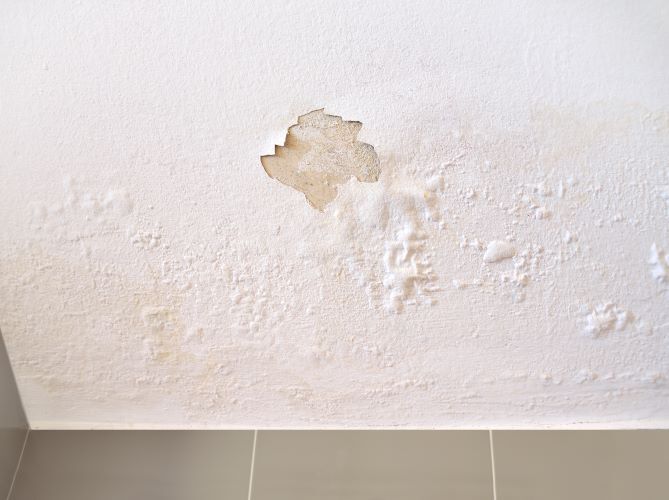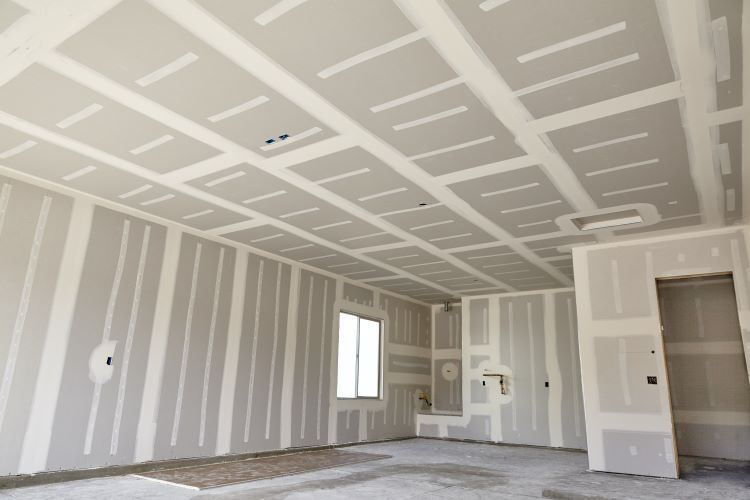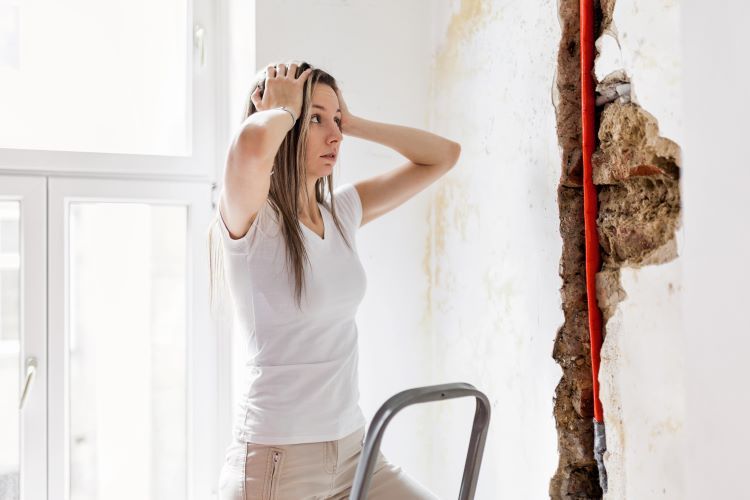Drywall Water Damage Repair Services
What are the effects of water damage to drywall?
Discovering that you have a wall or ceiling in your home that has somehow been damaged by water can be devastating. Water damaged drywall can have varying degrees and can eventually prove to be disastrous, the first signs typically start with discoloration to the effected area or peeling paint, but these symptoms quickly worsen. Although these effects appear to be minor in the beginning, if they are not attended to immediately then significant damage could be done. The potentially destructive damage is not the only concern with these types of repairs either, the main area to address is to find the source of moisture which is causing the damage to your walls or ceilings. If this is not resolved then it could lead to the eventual growth of mold and other extremely harmful bacteria. At London Drywallers we treat water damaged drywall cases with the utmost care and attention. We understand that whether it is your home or your business, a water damaged piece of drywall must be attended to immediately, and professionally. To help with this further we've gone over general causes and symptoms of water damage below, as well as how to fix these problems. If you need immediate attention then please get in touch with our team today.
Repairs to damaged drywall caused by water can be performed on your own if you feel confident and comfortable with the process. However, we advise leaving this to the experts. Replacing damaged sheets of drywall can bring about their own sets of challenges throughout the process, and the finishing with tape and mud can be left looking very unsettling when done incorrectly. If you have water damage to a wall or ceiling on your property, please give us a call. We would be happy to provide more information, or discuss your options for repairs.
Request a free estimate!
Water Damaged Drywall Symptoms
Discoloration
This minor defect can be easy to miss, but staying alert to the color of your drywall can help catch water damaged areas early, before any significant damage has been done.
Peeling Paint
Seeing the paint peel back away from a wall or ceiling is a tell tale sign of water damage. This can often be accompanied with bubbles on the surface. If you see this then be sure to check the surrounding area for any further signs of damage, and try to find what may have caused this issue.
Soft, Spongy or Wet to Touch
If you suspect water damage to a wall or ceiling, feel around that area with your hands, if it feels softer than normal, or wet and spongy then you definitely have water damage to the area. If you find this then its important to call a professional right away such as London Drywallers.
Musty Odor Throughout the Area
If you begin to smell a foul musty odor in a certain room or area of your home or business then water damaged drywall could potentially be the cause. Thoroughly investigate any unusual smells to see if you can detect any water damage to your walls or ceilings.
Staining to the Damaged Area
One of the most common signs of water damage is a large stained area to your wall or ceiling. The stain will be very discolored and generally has the appearance of brown or yellow looking clouds. In some instances these stains will cause the effected area to sag. If you notice this symptom, then call us right away so we can get this fixed for you.
Mold Growing on Walls or Baseboards
At the first sign of mold, the situation has to be remediated at once! Mold is extremely hazardous and can cause numerous ill effects if inhaled, especially over extended periods of time. Please contact us immediately if you find mold caused by water damaged drywall.
High Water Bill
If you happen to notice that your monthly water bill has suddenly spiked, then this could possibly mean that you have a leak somewhere on your property. These leaks can begin slow, causing only minor damage, but the sooner you can catch a leak, the more damage you can avoid, and the more money you will save in repairs.
Catching the signs of water damaged drywall early on can help to avoid disastrous results. If you suspect you may have water damage to a wall or ceiling anywhere in your home or business, please contact us right away. We would be happy to help you with any questions or concerns you may have.
How to Repair Water Damaged Drywall
Quick Fix to Drywall Water Damage
A common misconception of water damage to drywall is that the entire piece of damaged wall or ceiling needs to be replaced. While this is often the case with water damage, there are instances where the drywall can actually dry out over 48-72 hours, and can be fixed with simple mudding, sanding and fresh paint. When inspecting water damage to your wall or ceiling, poke your finger into the effected area. If it is very spongy and wet, then you will need to replace the entire damaged section. But if the area is generally still quite hard, then you may be lucky and able to easily fix this water damage. Although this is the best case scenario when fixing water damage, it is still vital to make sure the source of the water has been located and resolved, failure to do this will eventually result in further water damage in the future.
The More Traditional Repair to Water Damaged Drywall
Once you've realized that there has been catastrophic damage to your wall or ceiling, then it must be replaced. Depending on the severity and the location of the damage will decide how major of a job the repair will be. The entire section of drywall that has been severely damaged by water will need to be cut out and replaced with a new sheet of gypsum board. This can be performed on your own, but the proper precautions must be made. It is crucial to know what is behind the wall or ceiling before you begin making any cuts, you need to know if there are any wires, cables, or water lines in the way which could be accidently severed in the process. Once you are clear to cut out the damaged section, carefully cut through the drywall making sure to remove every bit of water damage. Once the effected area is clear you will need to check any nearby studs or insulation for further contamination of moisture. When ready to install the new sheet of plasterboard, carefully attach it to the studding using nails or screws, if the area being repaired is a ceiling, be sure to have a partner to assist in holding the sheet as to avoid injury. After the new sheet has been installed it will require taping and mudding, this can be performed on your own if you are comfortable, but this step is best left to the pros. We are more than happy to accommodate you in any drywall related repairs.




